It’s November 1st, All Saints’ Day, which is a public holiday in France. It’s supposed to be sunny but the fog hasn’t lifted all morning. After lunch, it finally clears but it is only 11°C instead of the promised 14°C. I wonder sometimes at the lack of synchronization between the weather gods and the weather.
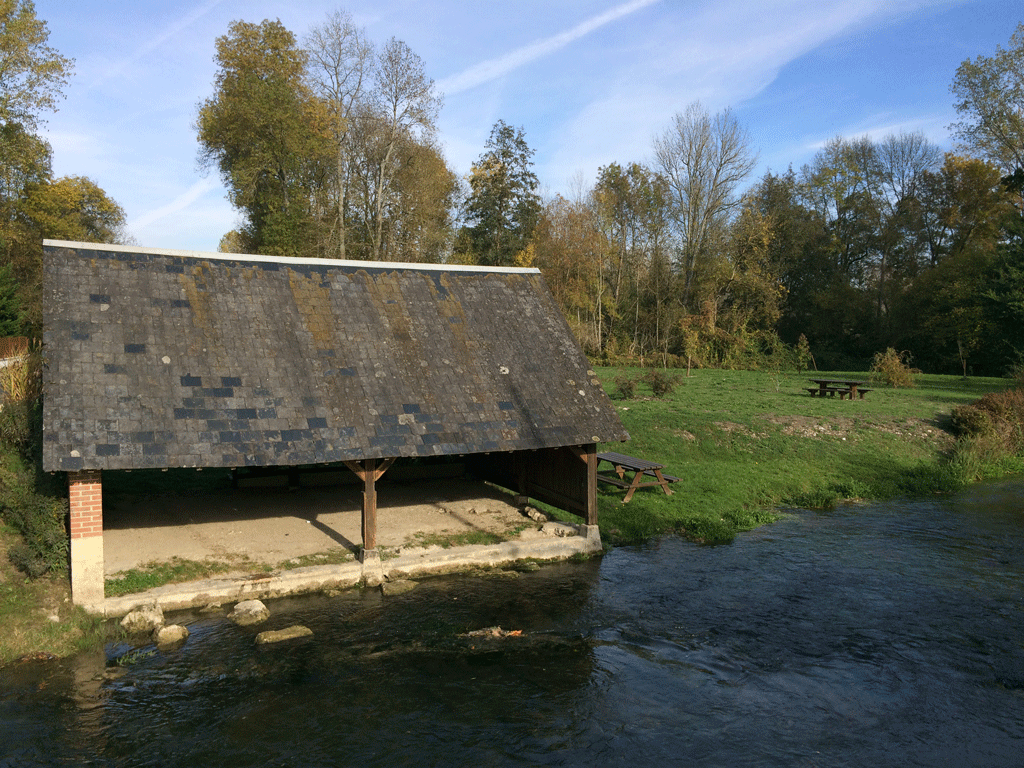
Jean Michel checks the map and suggests we walk along the GR tracks near Molineuf in the Cisse Valley so we can make the most of the autumn colours. GR means Grande Randonnée and corresponds to the long-distance hiking trails across France, http://www.gr-infos.com/gr-en.htm, indicated by red and white lines. We have a standing joke that if the path is muddy and uncomfortable, it’s a GR but it hasn’t been raining much recently so we should be OK.
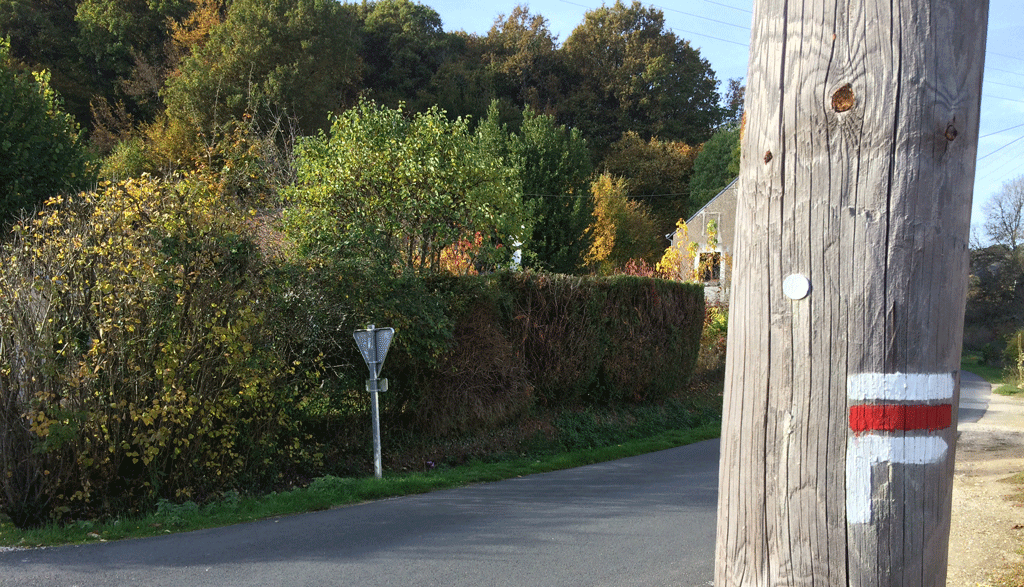
We park our car in Chambon sur Cisse next to the GR. The first thing we see is a wash-house with a perfect picnic table next to it. We’ll have to remember it for another time.
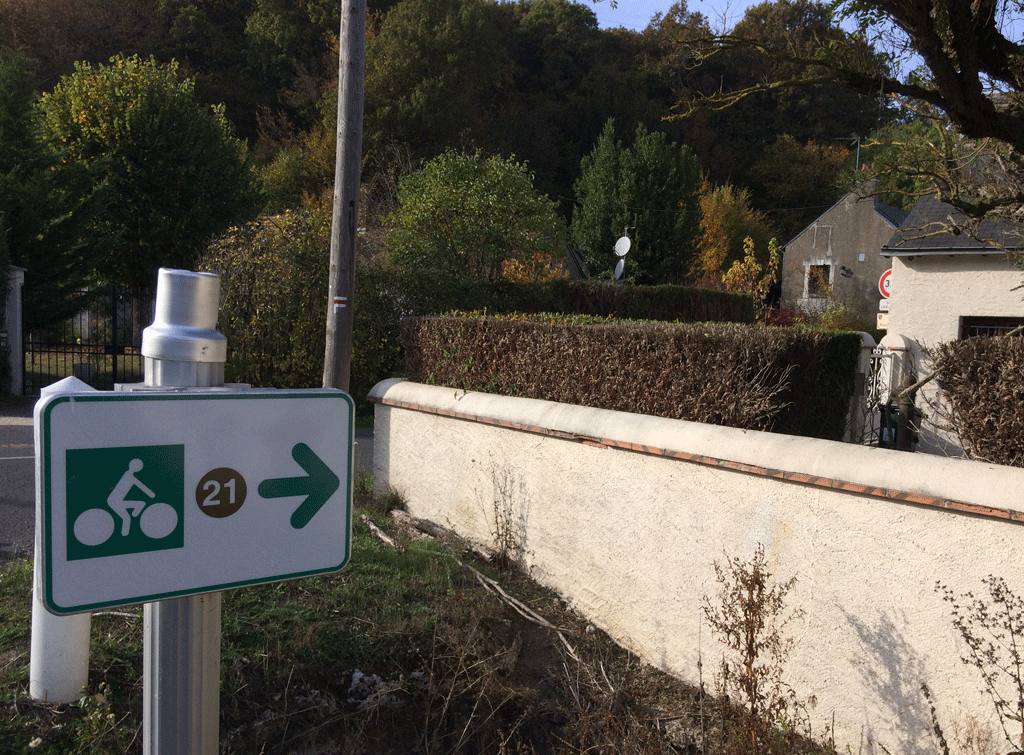
We soon discover that our GR trail is also cycling itinerary n° 21. How come we’ve never seen it before? Locally we use the Châteaux à Vélo map and we don’t know any other itineraries so close to home. Very mysterious.
The red and white signs are not far behind and show us that we have to turn left. So far, so good.
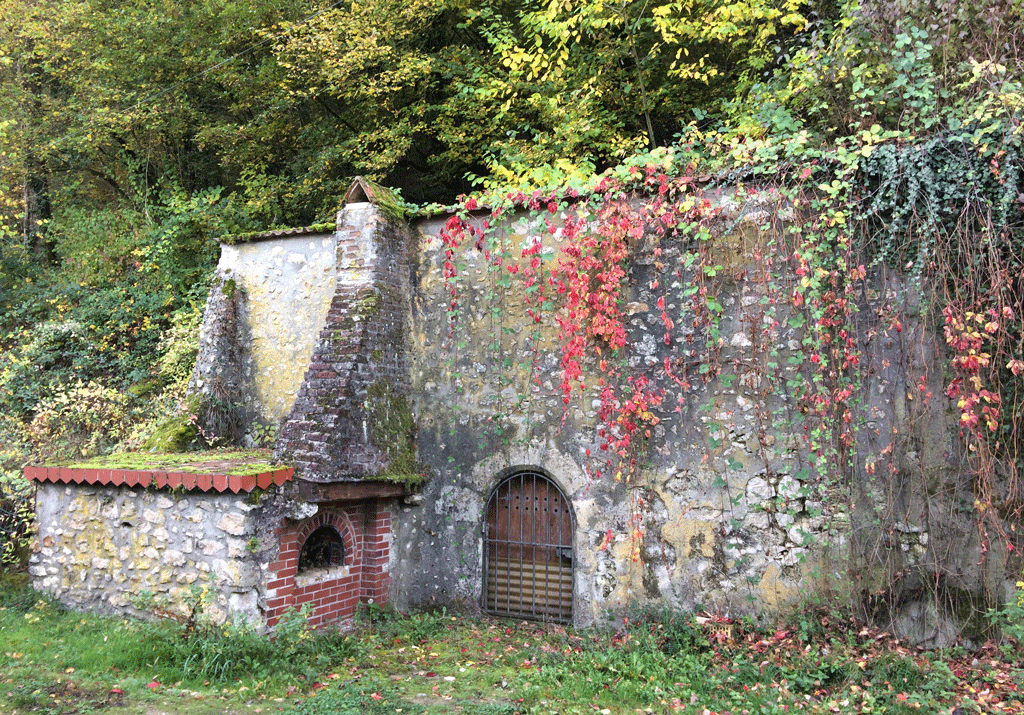
The bitumen road takes us to Bury where we see a wall with a bread oven and a door. Looks like the perfect place to celebrate bread-baking day! Jean Michel says it’s of recent construction but I don’t mind. I think it looks very inviting.
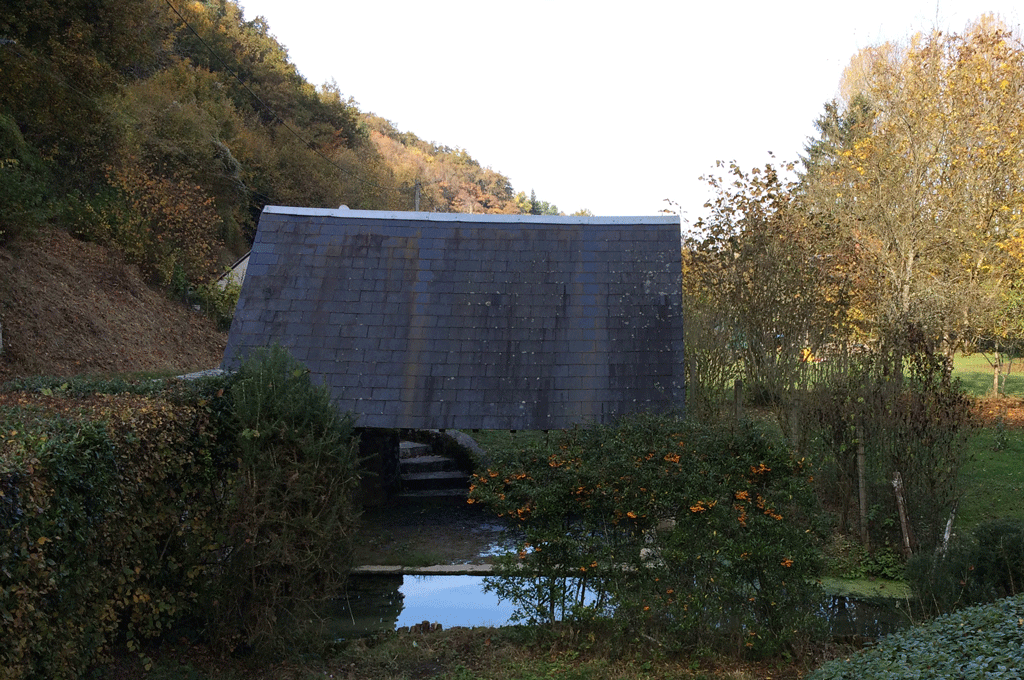
A little further on is a second wash-house with some little steps leading down on one side to the water.
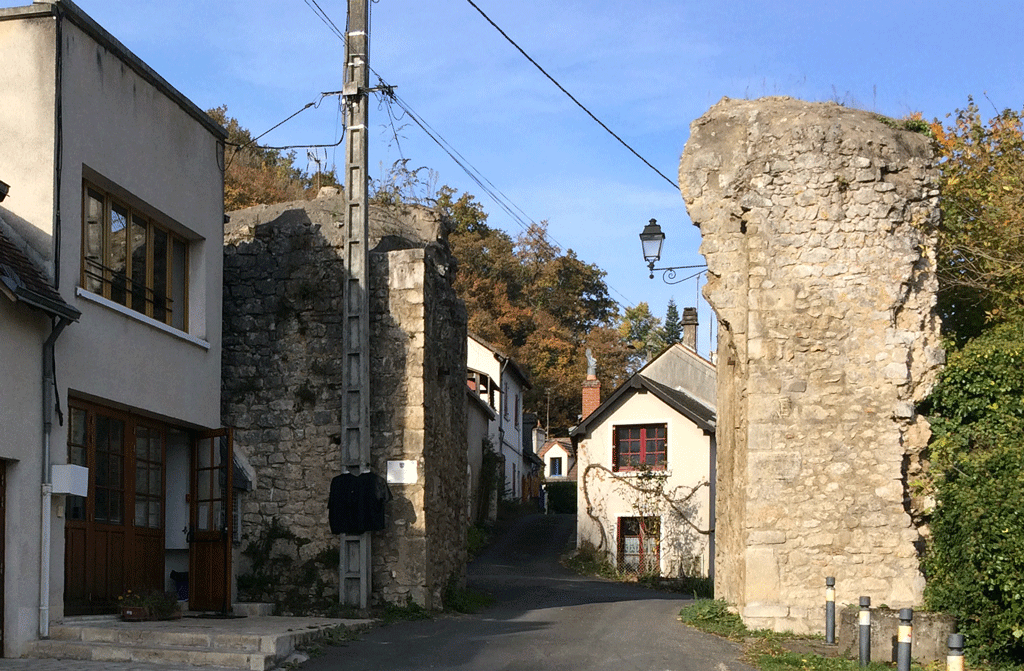
On the right we see what looks like the remains of a fortified wall and that’s exactly what it is – the remains of an 11th century wall around the feudal castle of Bury, restored by the local Lions Club, the municipality and a local construction firm.
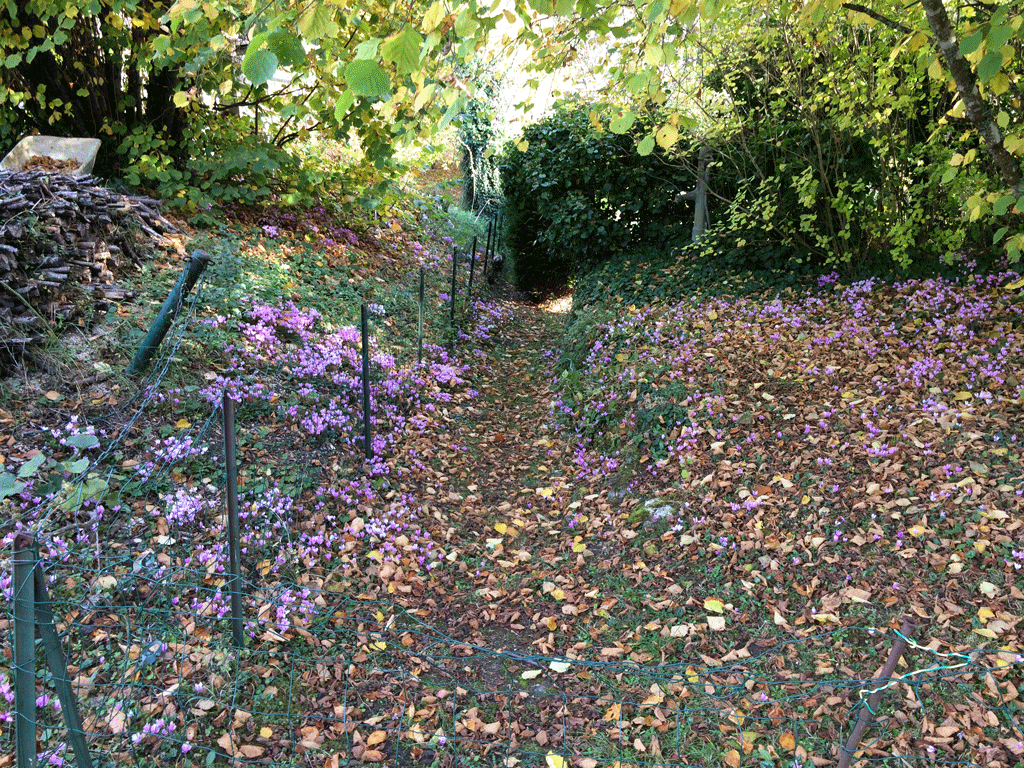
A little further on we see a carpet of wild cyclamens.
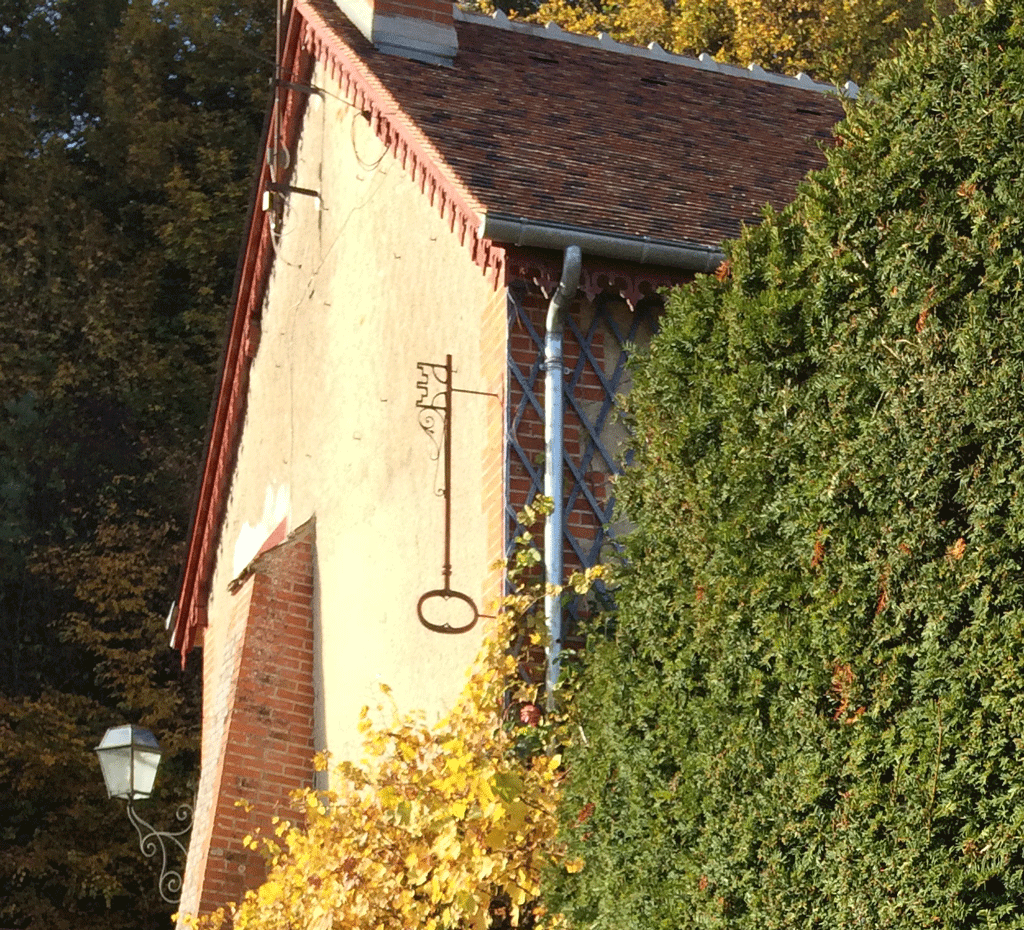
There is a fork in the road and no indication of which one the GR takes so we choose the left, following a sign that says Saint Secondin, 12th century, and takes us past a locksmith with a giant key on the wall.
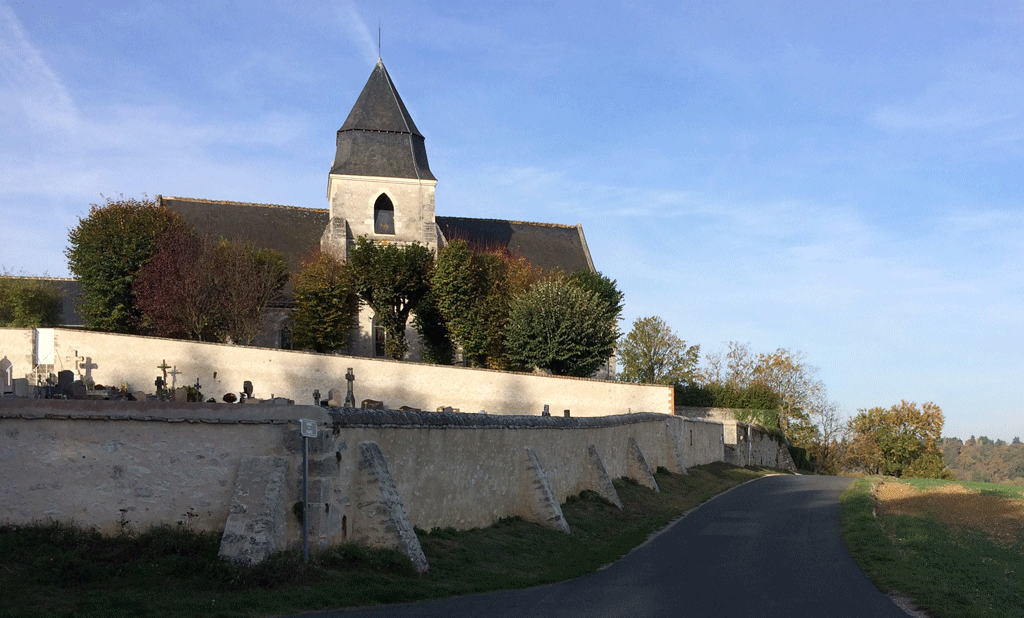
The church hoves into sight on a rise overlooking a little valley.
Since it’s 1st November, there are quite a few people putting the traditional chrysanthemums on family graves in anticipation of All Souls’ Day (2nd November). Twenty million pots are sold every year. The tradition, which replaced that of lighting candles, which symbolize life after death, dates back to 1919 when France was celebrating the first anniversary of the armistice of World War I on November 11th. President Poincaré wanted flowers put on all the tombs of France and one of the rare flowers that comes into bloom at that time of the year is the chrysanthemum. The tomb-flowering date gradually shifted from 11th to 2nd November.
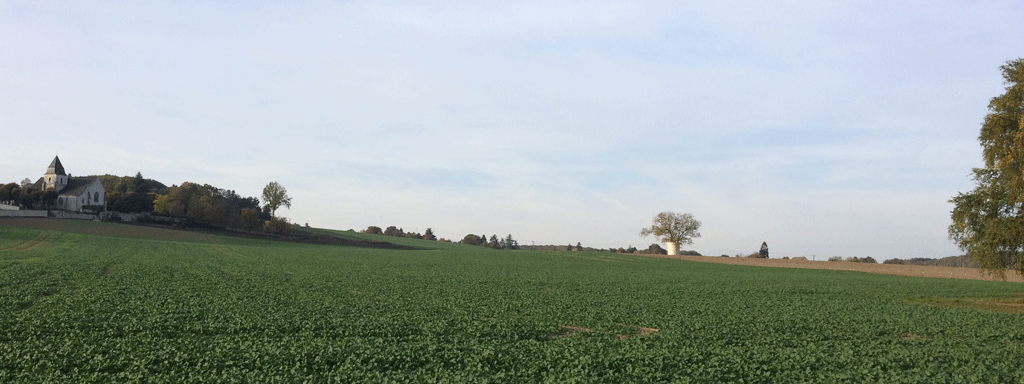
Over to the right, in the middle of a field I see a most surprising thing – a giant flower pot containing a large tree. A quick search of the Internet when I get home does not give me any clue about its existence.
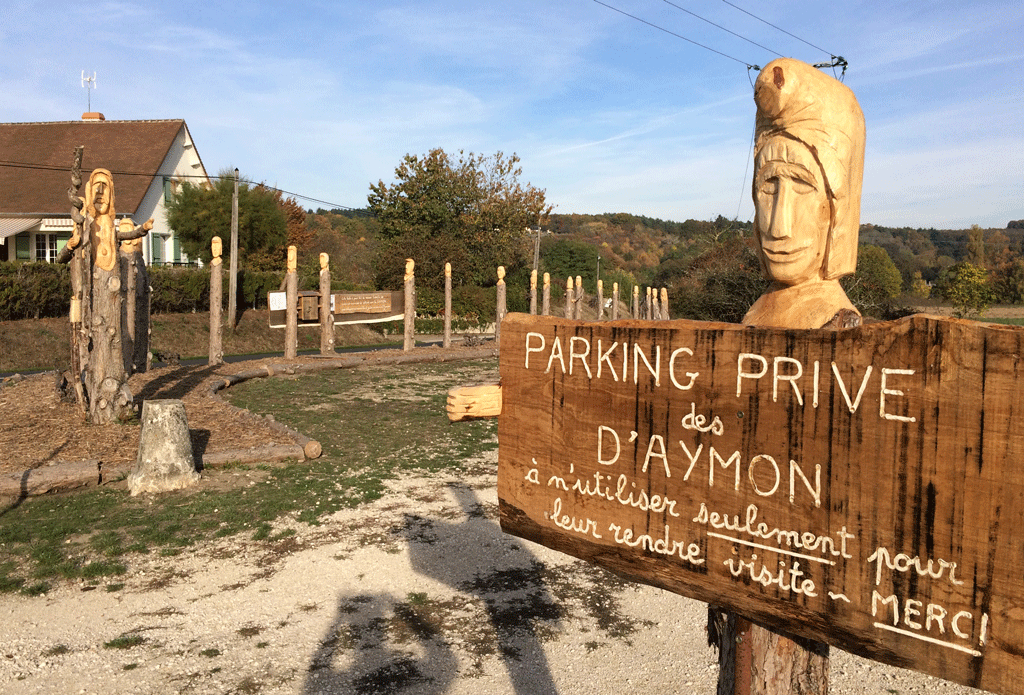
A little further on, we come across an unusual sign that says “Private parking lot of the D’Aymons – to be used only to visit them”. The D’Aymons turn out to be a group of wooden sculptures in Indian file. A charter explains how to become a member of the D’Aymons “class-less” society where time is the only currency.
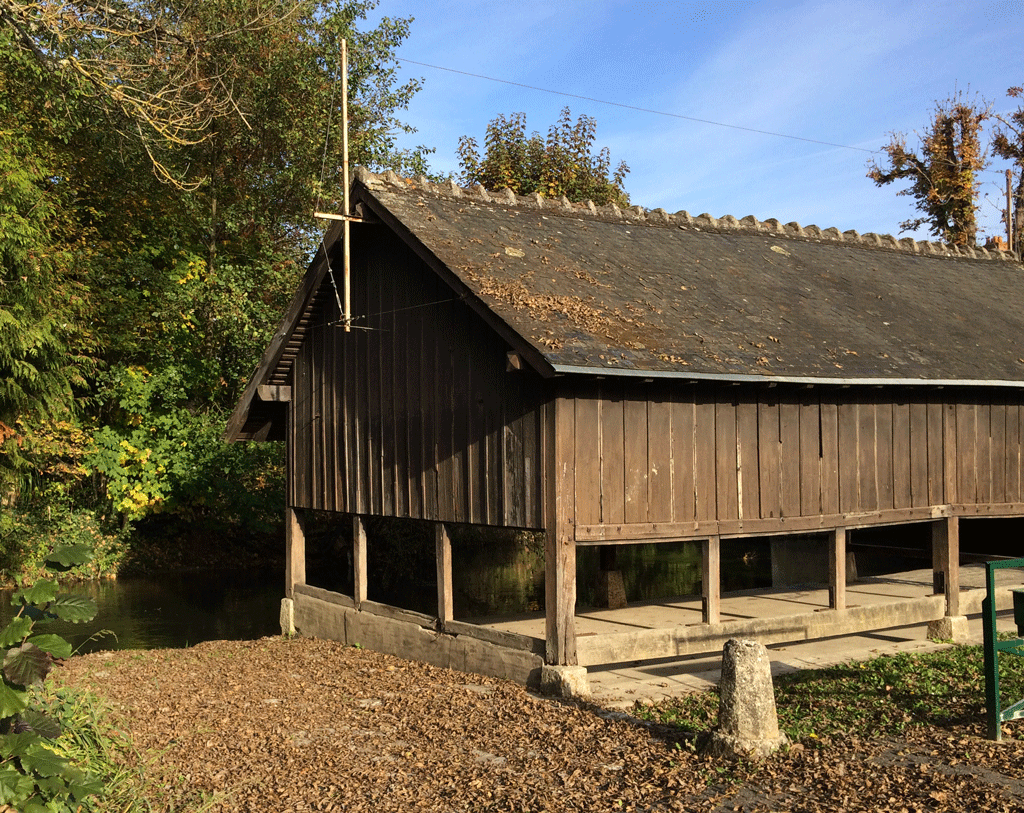
We arrive in Molineuf, which is a contraction of Moulin Neuf (new mill) and see our third washhouse on the Cisse.
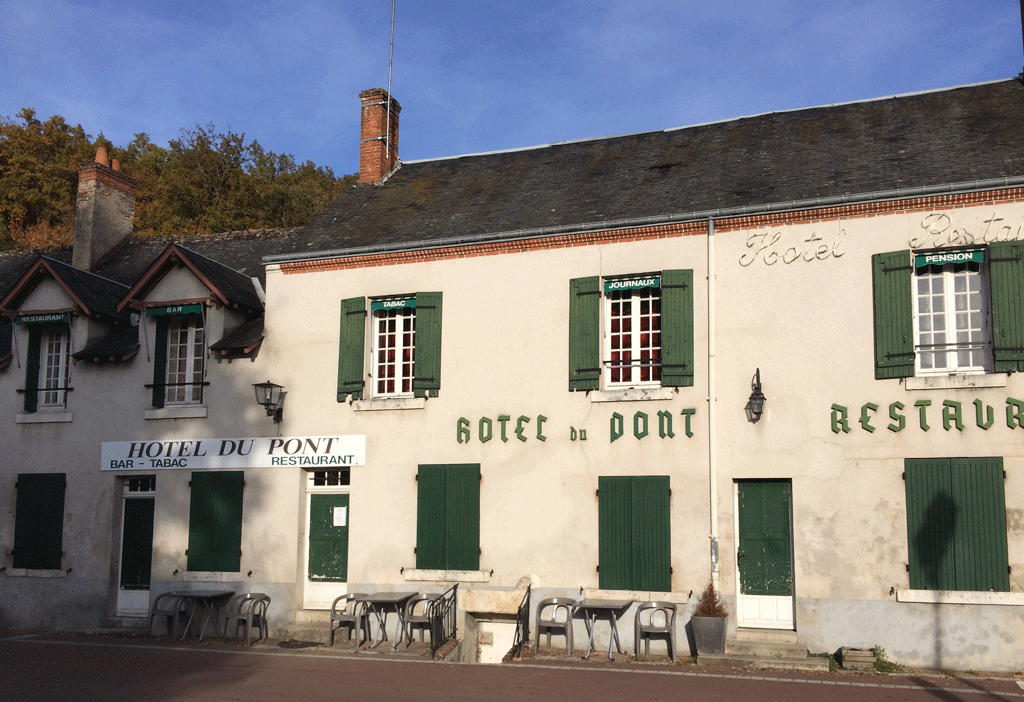
We turn left past the aptly named Hôtel du Pont, which is closed but looks most inviting with its terrace on the Cisse.
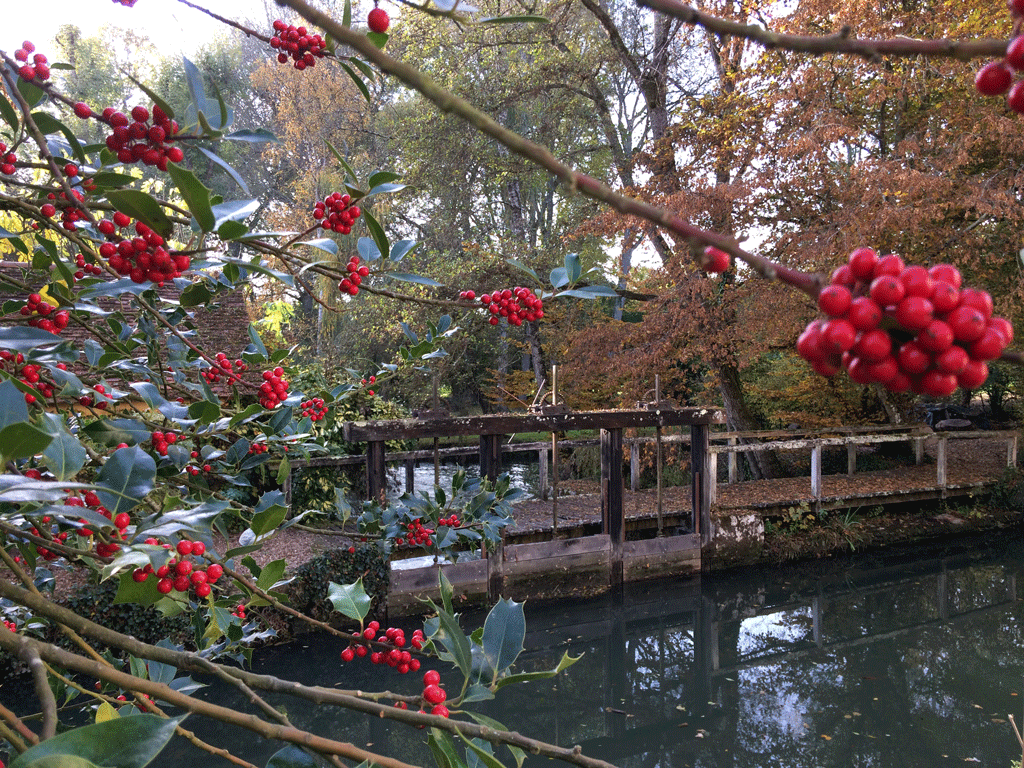
A little further is a stunning holly bush. I’ve never seen one so full of red berries. I’m going to check out a few gardening videos to see how I can increase the production on my own bush!
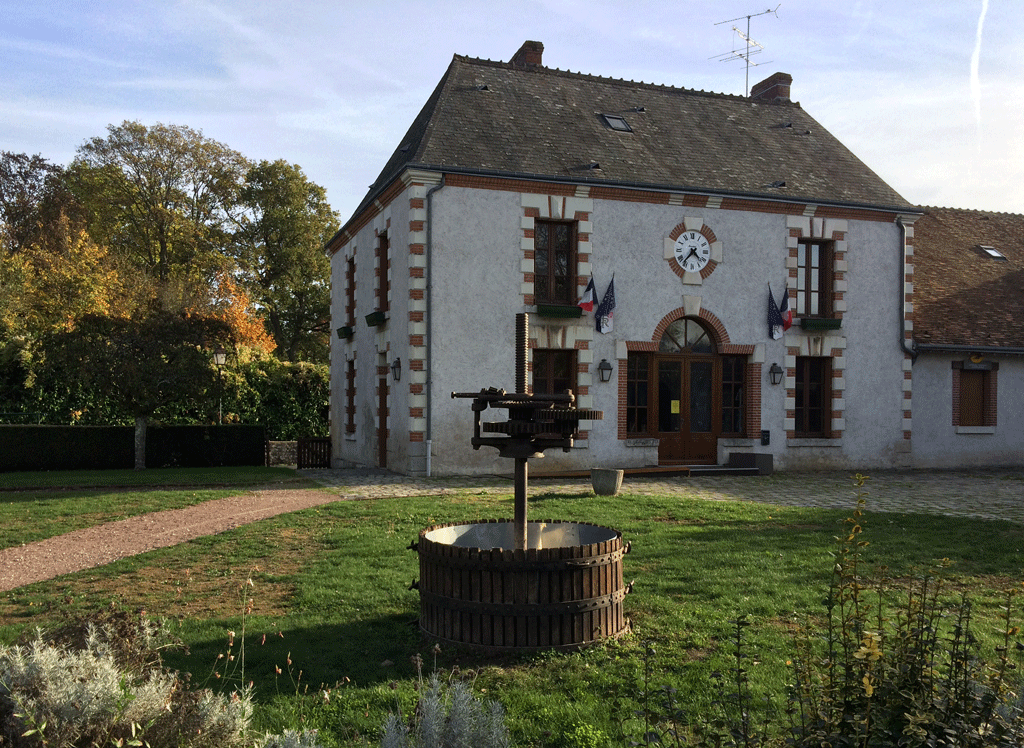
We choose a bench in front of the local Town Hall for our tea and biscuits and discuss which route we’ll take to go home.
After retracing our steps, we turn left so that we are walking downhill from the church of Saint Secondin and have an excellent view of the potted tree.
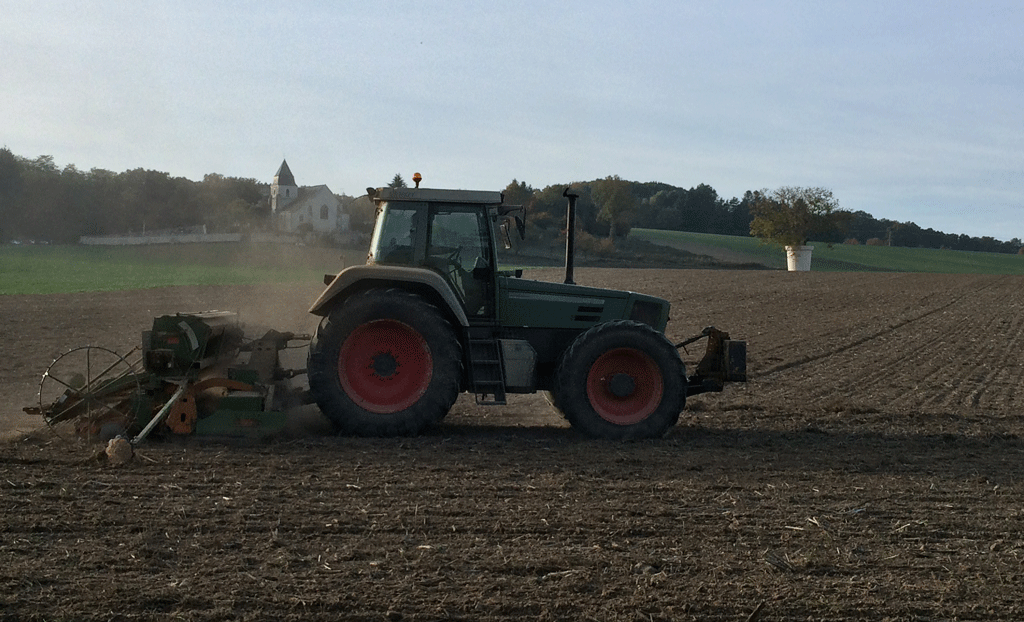
Jean Michel is very pleased because he will at last be able to see the brand of a tractor he has been watching out of the corner of his eye. It is remarkably quiet, he tells me. It’s a German Fendt.
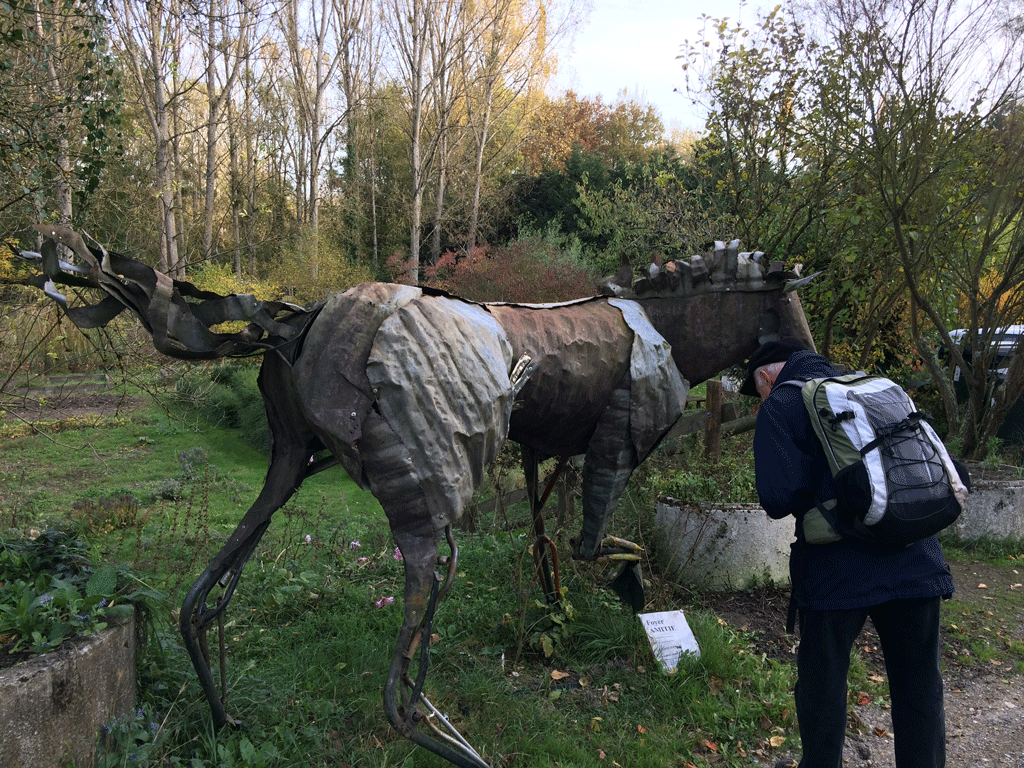
We arrive back in Bury and Jean Michel takes a closer look at the modern sculpture of a horse made by a local community called “Le Foyer Amical”.
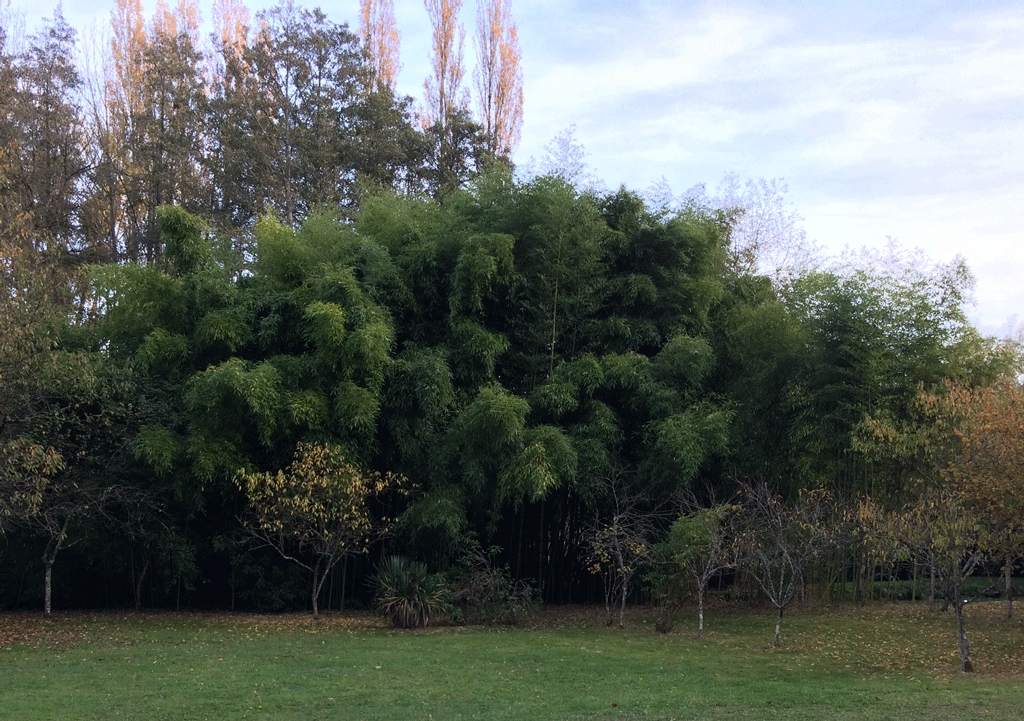
Further left we see a massive thicket of bamboo. I didn’t know they could grow so high.
We walk back to the car having covered a total of six kilometers. I can’t believe that we can have seen so many unusual things in a such a short space of time in a tiny country area!
 This post is a contribution to Lou Messugo’s All About France blog link-up. For other contributions, click here.
This post is a contribution to Lou Messugo’s All About France blog link-up. For other contributions, click here.




That is a marvelous scenic walk!
I love the recycled corrugated iron horse!
It appears to have been made by the “foyer” opposite.
love your insights on all your blog entries thank you for giving me so much enjoyment of your part of france
You are quite right that you packed a lot into 6km. I love that French habit of walking on rest days. #AllAboutFrance
Yes, it is. We cycling for six months and walk for six months!
Nov 1st was a fabulous day for a walk. We also took advantage of it down here in SW France to do the same thing. You clearly saw many interesting things on your walk. I love the horses! #AllAboutFrance
Yes, the horse was pretty exciting.
what a beautiful country walk! Thanks so much for sharing your photos.
You’re very welcome! I love to share :).
What a lovely autumnal walk and so very different to any walk I could take around my area. I love the key on the locksmith’s building and the horse sculpture. Thanks for linking to #AllAboutFrance
Every corner of France is different!
Such a variety of surprises. It could be a walk to capture in each season.
We’ve done two more around the same area and there are not nearly as many surprises. We keep crossing the bike itinerary though so we’ll go back on our bikes.